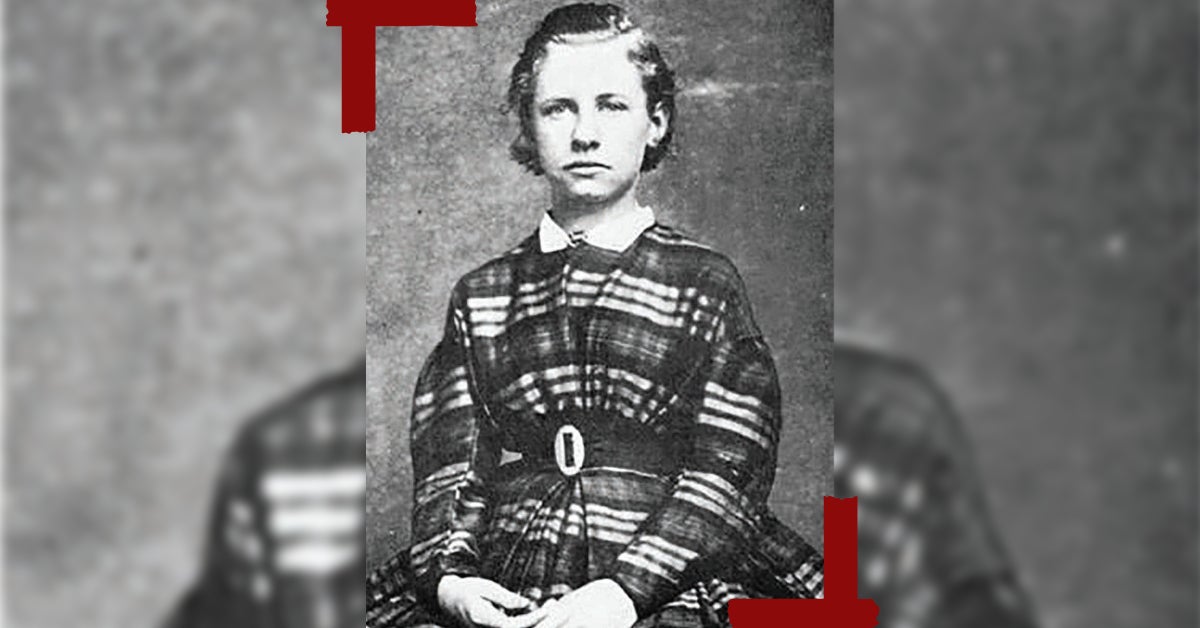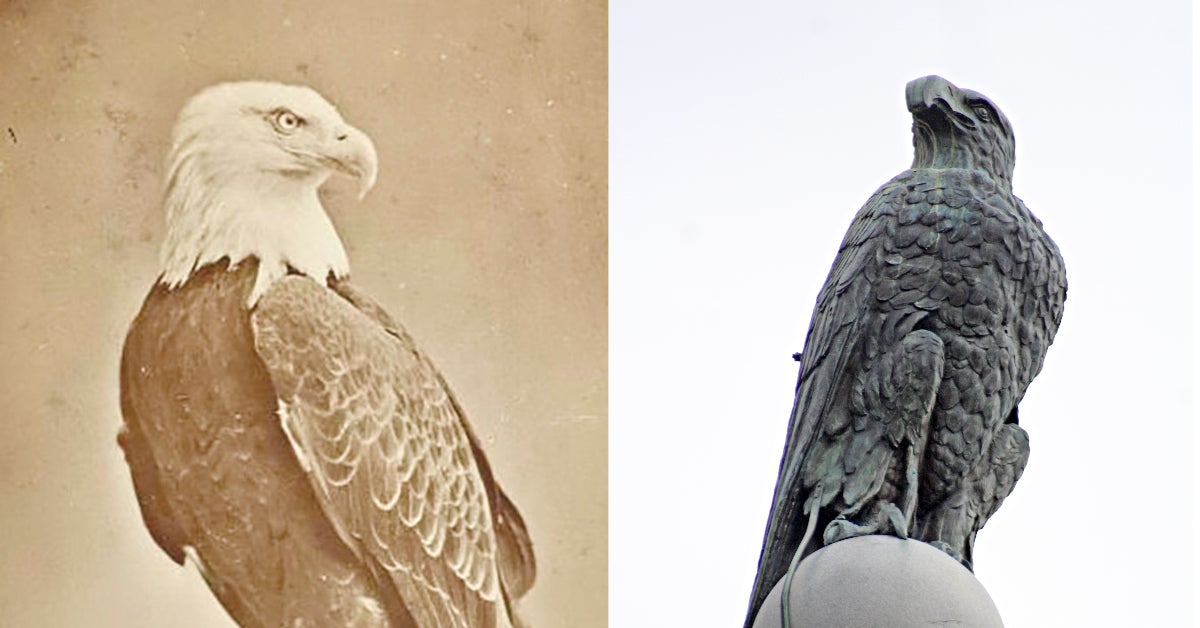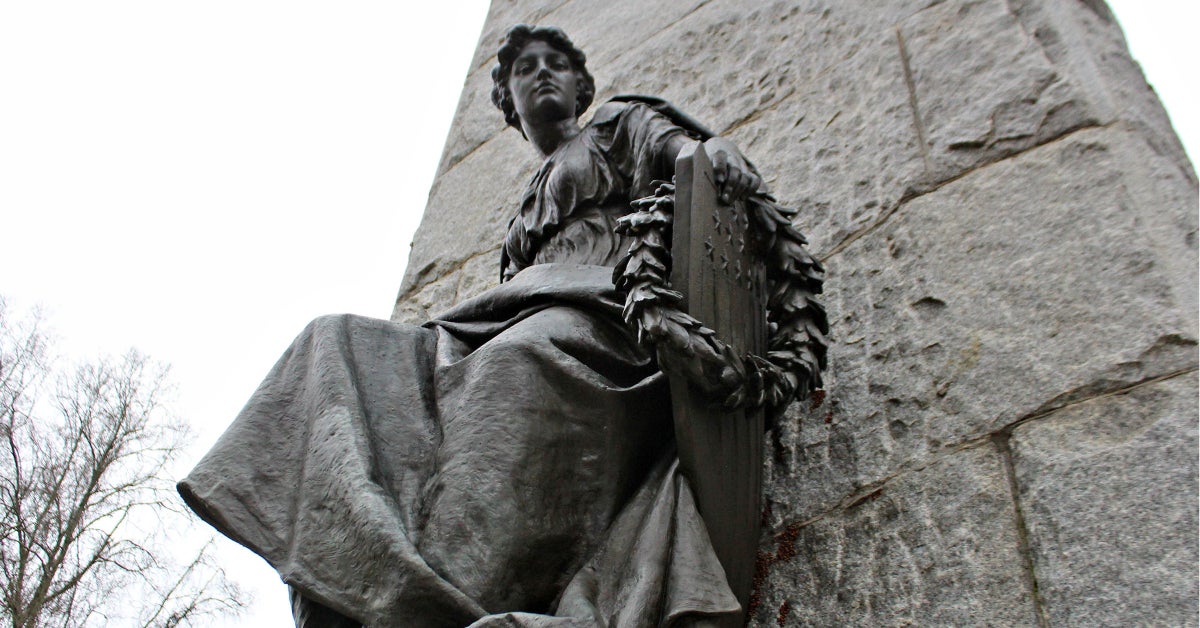‘Poor Pitiful Thing’: Child’s Siege narrative provides link between generations
Published 7:00 am Saturday, February 25, 2023

- Lucy McRae Bell. (Library of Congress Photo)
Behind the façade of a 58-year-old woman lies the spirit of a young girl, only 10 when she was subjected to the atrocities of living in a war zone.
In 1912, barely 50 years after the Siege of Vicksburg, Lucy McRae Bell, now grown, sat down to reckon with her past. The family lived in Vicksburg in the home now known as Planter’s Hall, which, prior to the Siege, was handsomely outfitted for the McRae family: Lucy’s parents, William Allen McRae and Indiana “Indie” Rozell McRae, and her two siblings all knew relative comfort and peace. That is, if there was such a thing in a river town as rough around the edges as Vicksburg.
The McRae family was indeed well-to-do, but when the Siege began in April 1863, it was 47 days of hell that left no one spared regardless of status, race or creed.
Lucy, who eventually left Mississippi behind and moved to Indiana as an adult, wrote her account for Harper’s Weekly. Though she was long removed from her childhood on the Mississippi River, her account, now known as “A Girl’s Experiences in the Siege of Vicksburg,” was just that — she revisited the Siege not only in her mind, but in her spirit as well.
She described the experience as “indelibly impressed upon my mind,” writing in her essay that she often was questioned about her recollection of the Siege so many years after the Civil War ended. Her response settled any speculation.
“My answer is that, being shut up in the place, living in a cave under the ground for six weeks, and being endowed with a good memory, facts and circumstances were impressed upon my mind; besides, I do not think a child could have passed through what I did and have forgotten it,” she wrote.
Her story begins with an ominous scene: her mother and others in town standing on balconies and hills with spyglasses trained on a black figure moving down the Mississippi River toward town. That Union gunboat brought with it a steady stream of shelling that claimed the life of Patience Potticary Gamble, who was retreating to a cave with her child from their house on modern-day Mundy Street. The cave was located in the rear of what is now Cedar Hill Cemetery.
While Lucy’s father refused to leave their home at 822 Main St., he sent his wife and children 30 miles away to the hamlet of Bolton’s Depot. They were safe, briefly, until the battle of Champion’s Hill.
Then, as the family fled back to Vicksburg, they inadvertently served as torchbearers for Gen. Ulysses Grant and brought behind them a level of hell never before experienced on the River City’s soil.
‘Run, you poor pitiful thing.’
Lucy’s story touches a number of significant locations in the Siege story — Hurricane Plantation, home of Joseph Davis (Jefferson Davis’s brother) and the prolific Montgomery family; Pemberton’s Headquarters, and of course the 500 caves nearly every citizen fled to when their homes were no longer safe.
The McRae family stayed in two different caves, the first with some 200 people.
That time was short-lived, as a landslide triggered by a shell embedding itself 6 feet into the earth and exploding left Lucy buried under a pile of earth. She was pulled out head-first as shells exploded around the party.
“The blood was gushing from my nose, eyes, ears, and mouth.”
However, Lucy wrote, there was a flicker of joy in the moment that nearly snuffed out her life: A baby was born in the back of the cave in the midst of the chaos. He was named William Siege Green — son of Duff Green, whose iconic mansion still stands today in Old Vicksburg.
The morning after her near-death experience, Lucy’s mother decided to make a run for it and head home. Surely, Lucy wrote, it would’ve been better to take the risk of staying in their home.
The family, like others during this time, became skilled at avoiding airborne shells, running toward them and away from the impact points and ducking when necessary.
“As a great mortar shell would come over with its rumbling noise, which I shall never forget, one of my brothers would say ‘Run along, poor little thing,’ and my remembrance is that I was indeed a poor little thing.”
Her father sent the family to another cave closer to home, which was smaller and, they hoped, safer. Times got worse, though, as the Louisiana soldiers resorted to eating rats and mules to survive.
Grant’s army was succeeding in choking the life out of Vicksburg, but the battle raged on.
Lucy’s mother was never desperate enough to eat mule meat, she wrote, but the children did “and it tasted right good.”
After witnessing a young woman meeting her death after being pinned under a mortar shell, the McRaes, Rice and an enslaved nursemaid, Mary Ann, fled once again before they were caught in the midst of a grisly battle.
“Not a word was spoken except ‘run,’ and we did run.”
Although their home was hit with shells, it sustained no major damage during the Siege. However, McRae recalled, a Minié ball did pass through his whiskers before lodging in a rocking chair nearby.
McRae wrote, that, 50 years on, she still had the one-sheet Vicksburg Evening Post edition printed on wallpaper as a souvenir from the awful time.
Her story comes to a close on July 3, 1863. The eerie silence after 47 days of hellfire surely meant only one thing: July 4 was to be the day of reckoning for the people of Vicksburg and the Southern army.
However, as is now etched in history, that was not to be the case.
“We were all sitting outside the cave, twilight approaching, when father came in sight. Mother thought father had decided to die with his family the next day, for everybody thought that General Grant would make the effort of his life to take the city on the 4th. Father came to mother, looking sad, with tears in his eyes, and said, ‘You can all come home for a night’s rest. General Pemberton has surrendered, and General Grant will enter the city in the morning.'”
She recalled the next day, the defeat and the bitterness and the quiet relief that the worst might be over.
Grant’s army came into the city through Jackson Road and Glass Bayou Bridge, and a separate faction arrived by the Mississippi River.
“The riverfront presented a scene of unsurpassed grandeur. To say that the scene looking from the upper porch of our residence, where we commanded a fine view, was superb in its magnificence is to say little. The inspiring grandeur of gunboat after gunboat, transport after transport, with flags flying to the breeze, broadside after broadside belching forth in honor of a victory dearly won, bands playing, made a picture that can never fade from memory.”
The juxtaposition of Union patriotism and Confederate decimation is something McRae said she found puzzling but had long tried to reconcile in her mind.
“Men looked so forlorn, some without shoes, some with tattered garments, yet they would have fought on.”
McRae died in October 1930 at age 76, and no more than three generations separate her from those walking the streets of Vicksburg today.
Jordan Rushing, a historian at the Old Court House Museum in Vicksburg, said Lucy McRae’s account of the Siege is a significant piece of literature because it provides a link between the city’s past and present.
“There are a lot of similarities in Vicksburg then and Vicksburg now,” Rushing said. “A lot of what we notice about Vicksburg now developed between that 1870-1890 Vicksburg; Lucy probably saw a lot of that shift.”
Her account of the Siege having wide distribution was also significant, he said, because it provided a perspective of the Civil War many Americans wouldn’t have seen otherwise.
“Being able to have that experience in the 1860s and being able to write about it at the national level, she gave that perspective to thousands of people,” he said. “It’s a primary and secondary source all wrapped up into one. From a child’s perspective, they don’t know what’s normalized. To be able to review her experience in retrospect, historically it’s wonderful and psychologically, it’s remarkable.”





